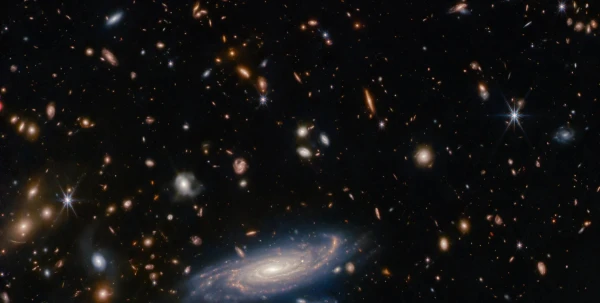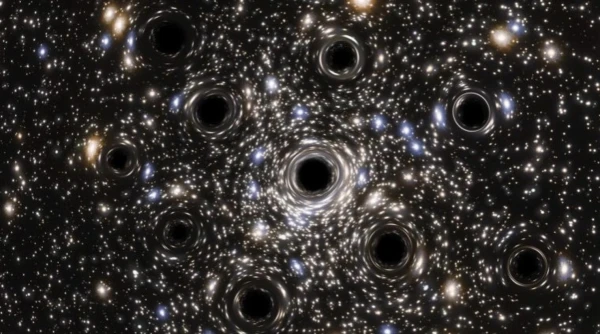
A new study has solved long-standing mysteries of giant radio arcs that form during galaxy cluster collisions and stretch across millions of light-years, reports Focus.
During collisions of galaxy clusters, huge ghostly arcs remain, which are bands of diffuse radio emission stretching across millions of light-years. These strange structures, created by gigantic shock waves that accelerate electrons to nearly the speed of light, are called "radio relics." Until now, explaining the physics of these strange structures has been difficult. The study was published on the arXiv preprint server, reports Space.
Previously, using space telescopes, astronomers discovered that the arc-shaped structures have magnetic fields that are much stronger than models suggest. It was also found that the shock waves created during the collisions of galaxy clusters have varying intensities depending on how they are measured: using radio waves or X-rays. Measurements in the X-ray spectrum showed that the shock waves are too weak to accelerate electrons at all, making it unclear how the "radio relics" could have been created. Now astrophysicists have solved these mysteries.
The scientists used large-scale simulations to study the formation and evolution of the strange structures. Astrophysicists also created simulations of galaxy cluster collisions over billions of years. This helped to understand the unusual physics of radio arcs.
The study used the collision of two massive galaxy clusters, resulting in enormous arc-shaped shock waves spanning nearly 7 million light-years.
The researchers then studied the physics of a single shock wave interacting with the turbulent edges of galaxy clusters. They modeled how electrons are accelerated at the shock wave front and what the radio emission would be like.
The research showed that as the shock wave moves outward through the galaxy cluster, it eventually collides with other shock waves created by cold gas in the space between galaxy clusters. This leads to the compression of gas into a dense layer that collides with smaller gas clumps, forming a cosmic vortex. It amplifies the magnetic field, which corresponds to observations.
Astrophysicists also found that as the shock wave passes through dense gas clumps, certain areas of the shock wave front are sharply enhanced and accelerate electrons more efficiently. This is better observed in the radio spectrum than with X-rays, which also corresponds to observations.
Furthermore, the scientists discovered that in fact, most of the radio emission is generated only by the strongest areas of the shock wave front.














Leave a comment